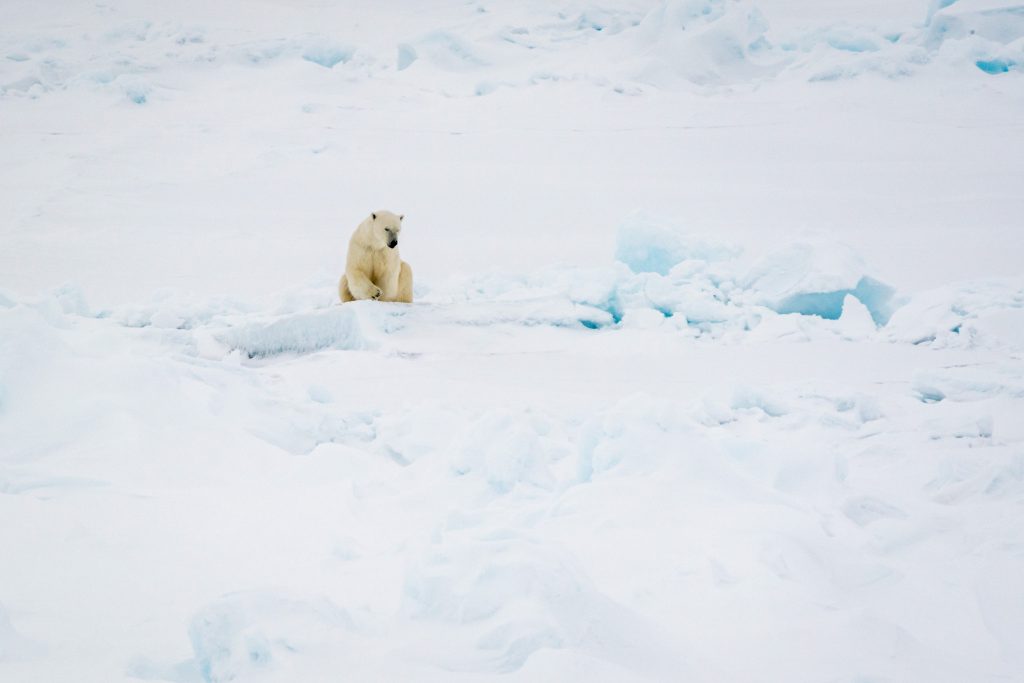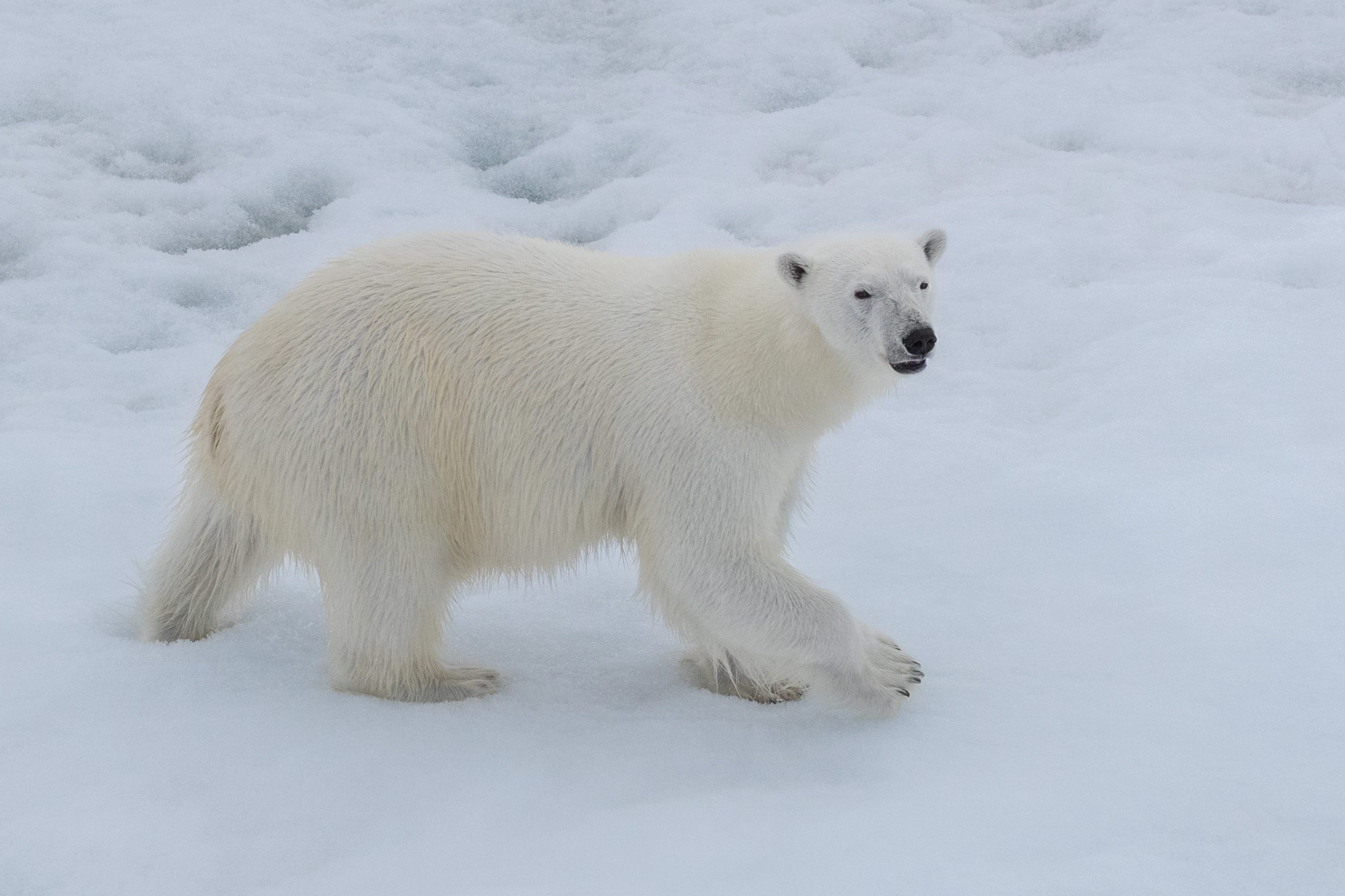by Matthew Shupe, CIRES/NOAA scientist and co-coordinator of MOSAiC
It’s getting hard to keep track as there have been so many bears lately. Visits in the evening-to-early-morning going into last Thursday, Friday, and Saturday. Then here again last night (Monday). And this morning at 4:30 am. They mostly have come during our non-on-ice periods when everyone is safely onboard Polarstern. But apparently the bear this morning did not get the memo. The atmosphere team has been somewhat stuck sampling between the hours of 9 am and 5:30 pm with specific systems like the tethered balloons and drones. These activities require operators, and so they have only then had the opportunity to sample one part of the diurnal cycle, which corresponds with the working day. But many of the processes we want to study include those that can be sensitive to the time of day. While the sun Is above the horizon for 24 hours per day, the angle of the sun, and thus the amount of energy from the sun that reaches the surface, changes dramatically. This single change can influence things like the surface temperature, the lower atmospheric temperature structure, the amount of atmospheric mixing or turbulence, and possibly also the clouds and fog. We’ve had a number of days lately when it has cleared out during the “night” from an otherwise cloudy day. So, the atmospheric team came up with a plan to start operations earlier in the day, 4 am ship time, to try and capture more variability during the day. But of course, the bear did not get the message, and decided to show up while people were on the ice during this early morning period.

Juarez was standing as bear guard as the tethered balloon and drone teams were preparing their operations out by Met City. He scanned sectors at a time, looking out through the fogginess, which limited visibility to perhaps 300 m. At some point he looked towards a fixed installation on the ice but saw something moving out there in the fog. A big shape….. clearly a bear. We have had so many lately that they are front and center in our minds. Juarez notified the drone people, as the bear approached in their direction, perhaps 150 m away. All teams were called in together…. And then they collectively walked back towards the ship. All the while, this bear just lazily walked by, sometimes shaking his head. A fat bear. Apparently well-fed. And mostly just curious. Just passing through. Within a short time, and having left all scientific equipment out on the ice, everyone was back onboard…. Safely. This was a perfect example of how to manage the situation. Observe the bear early, remain calm, collect people together, communicate with the bridge of the ship, move to safety. Too bad that the early morning atmospheric measurements had to be called off, but this was really a model for how we stay safe out on the ice.


